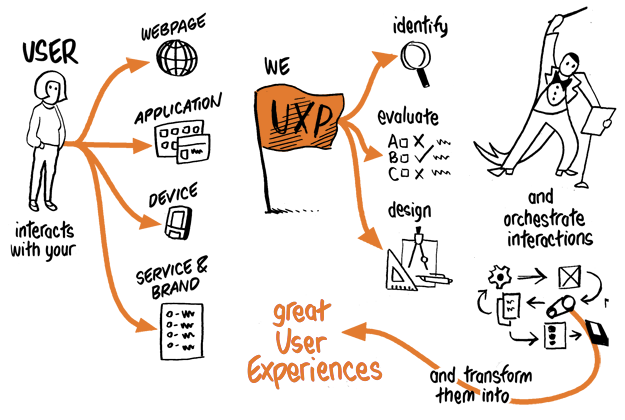Definition of User Experience
The field of User Experience spans across a breadth of focuses, often leading to confusion about what exactly it covers. In essence, User Experience is a human-centered approach to solving problems, but the lens and definition may change depending on which aspect you’re looking at.
The Concept
The literal meaning of the phrase User Experience is very simple and can be easily derived from the word itself. It is basically — what the user experiences. As simple as it may seem by the looks of it, there’s actually a huge process going on in the background of these two words which involves art, style, character, persona, thought process, psychology, mathematics and much much more.

We can take a very basic example of turning on a switch of a light. For turning the light on, we have to interact with the component which can deceive us as a very elementary task, the component i.e. the switch has its particular shape, size, color, material, physical appearance, functionality — which all may impact how we feel about the interaction.
Likewise, in the scene of digital world, UX refers to everything that affect’s a user’s interaction with a digital product. When people avail a product, there are some criterion or points with respect to which they evaluate it:
- Value — Does this product give me Value?
- Functionality — How does this product work?
- Usability — Is it easy to use?
- General Impression — How does the user feel while using it? So, in layman’s terms we can say that user experience is about what user thinks and feels rationally and emotionally while interacting with a component or product.

The Origin
Don Norman of the famous Nielsen-Norman Group, coined the ter “User Experience” in the 1990s. According to Norman,
User experience encompasses all aspects of the end-user’s interaction with the company, its services, and its products.
There’s a video available on the you-tube page of Nielsen-Norman group where Norman talks about the thoughts and usage of the word “user experience”.
Key things to remember
- To provide a good user experience the user’s needs should be met, without fuss or bother.
- Distinguishing the “User Interface” from the “User Experience” is very much important. Though the interface is an important part of the whole design, the experience provided to the user should also complement the design while keeping in mind the needs.
- We should also distinguish UX from usability i.e. if the product is easy to learn, efficient to use etc.
- The total user experience is a very broad concept, so we have to keep our focus not only on the bigger picture but also the smaller parts of it that come together to provide the experience to the user.


